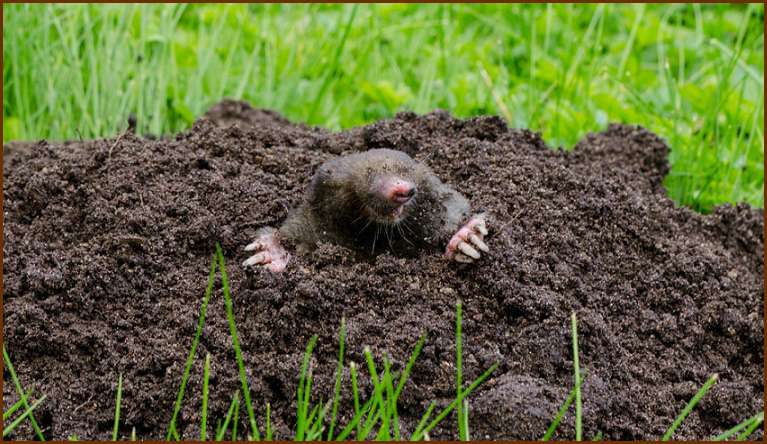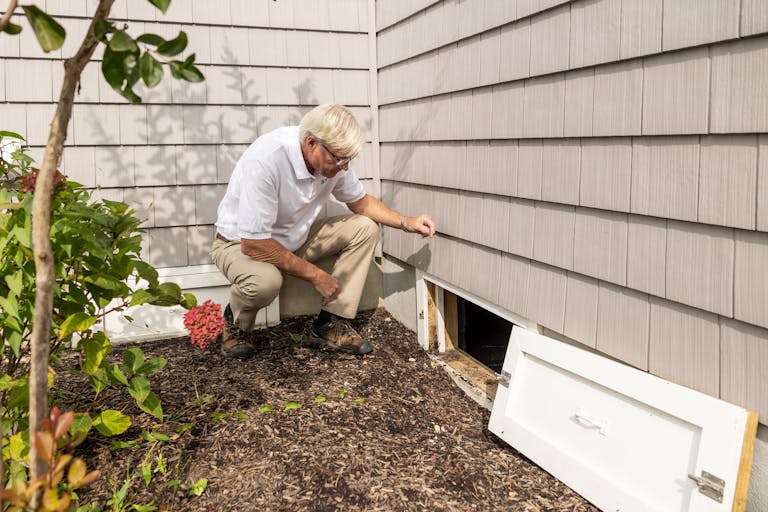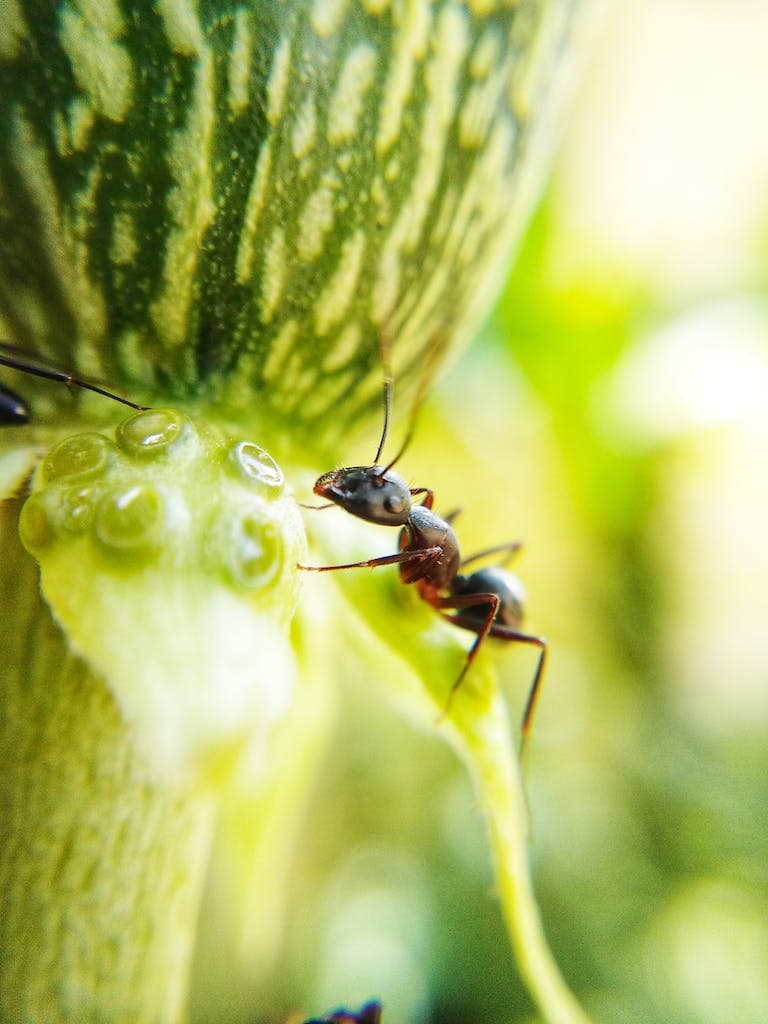Mole Control in North Texas: Deep Guide for Homeowners
Introduction
If you live in Argyle, Roanoke, Northlake, Highland Village, or nearby and are seeing raised ridges, tunnel lines, or sporadic mounds across your lawn, you could be dealing with a mole—or multiple moles. Because these animals live underground, consume insects and grubs, and actively repair their tunnels, controlling them requires more than just basic fixes.
This guide offers:
- Insight into mole biology in North Texas
- How to reliably identify active mole activity
- Proven methods—DIY and professional—for control
- Preventative strategies to reduce reinfestation
- A homeowner’s FAQ section
- An appendix listing sources for further reading
Let’s dig in (pun intended).
Understanding Moles: Biology & Behavior in North Texas
To effectively manage moles, it’s essential to understand how they live, feed, and tunnel in your region.
- In Texas, the eastern mole (Scalopus aquaticus) is the typical species encountered.
- Moles are insectivores: their diet mainly includes earthworms, grubs, insect larvae, beetles, and other small invertebrates.
- They dig two primary kinds of tunnels:
• Shallow feeding tunnels just under the surface (visible as ridges)
• Deeper, more stable travel tunnels connecting nests and feeding zones - Moles remain active year-round, although surface activity may shift with soil moisture and temperature.
- They are generally solitary—you often deal with one mole in a property rather than large colonies.
- Because they need abundant food due to high energy expenditure, moles often cover wide areas.
In North Texas, soil type (often with clay or mixed textures) and seasonal moisture fluctuations significantly affect tunneling behavior and the success of control methods.
Recognizing Active Mole Activity
Here are signs your property has ongoing mole activity:
| Indicator | Description | Interpretation |
|---|---|---|
| Raised ridges across lawn | Lumpy, linear ridges | Shallow feeding runs just below soil surface |
| Molehills or soil mounds | Loose, conical mounds of soil | Deep tunnel work or shifting between tunnel levels |
| Depressions or soft collapses | Small sunken spots in turf | Tunnel collapse or weakened soil structure |
| Rebuilt runs after flattening | You flatten or press down a run in evening; it’s raised again next morning | That run is active and frequently used |
| Patchy or stressed grass | Thin grass or turf damage aligned with tunnels | Soil disruption affecting roots or moisture flow |
A recommended method: flatten a short section of suspected tunnel in late evening, then check early morning. If the line is raised again, that is a likely active route for trap placement.
Proven Mole Control Techniques
Below are effective strategies—some DIY, some requiring professional expertise. The best results combine multiple approaches.
1. Trapping (Most reliable when done correctly)
Trapping remains one of the most dependable methods—if set in active tunnels with care.
Trap types:
- Harpoon (spring-loaded spear)
- Scissor-jaw traps
- Choker-loop traps
Best practices:
- Identify active runs via flatten-and-test.
- Probe the soil gently to locate the tunnel’s center.
- Position the trap so the mole must engage it when reopening the run.
- Cover trap placement (with soil, cloth, or board) to exclude light or disturbance.
- Check the trap daily; if unused after a couple of days, relocate it.
- Re-set traps as necessary, because tunnels may shift or new ones be used.
In North Texas, heavier or mixed soils require careful probe depth and trap placement. Be mindful of recent rain events or drought conditions that may cause tunnels to collapse or shift.
2. Repellents & Irritants
These are best used in addition to trapping, not as sole solutions.
- Castor oil–based repellents: applied as a soil spray or into tunnel networks. These can irritate mole tissues or digestion, encouraging movement out of treated zones.
- Natural or plant-based deterrents: certain plants are suggested in some gardening circles to make areas less attractive, though their effectiveness is modest.
- Ultrasonic / vibration devices: often marketed, but most extension resources and field reports indicate limited consistent success—moles may habituate or avoid only temporarily.
3. Barrier / Exclusion Techniques
These help protect specific high-value areas (flower beds, gardens) from tunneling incursion.
- Bury fine metal or hardware cloth (¼-inch mesh) vertically to a depth of 24–30 inches, with ~6–10 inches left above ground.
- Create an L-shaped barrier: straight down then outward (away from the protected area) to deter tunneling under.
- Use metal or rigid barriers around garden plots where full-lawn treatment would be cost-prohibitive.
Barrier methods don’t remove moles elsewhere, but can isolate and protect zones most vulnerable to damage.
4. Cultural & Habitat Management
These methods aim to make your property less attractive to moles over time.
- Reduce insect / grub populations: because moles follow their food, decreasing underground insect load helps lower mole pressure.
- Manage soil moisture: avoid overwatering, correct poor drainage, and reduce areas of saturated soil.
- Reduce thatch or overly loose soil: compacted or less loose soil is harder and less appealing for tunneling.
- Restrict easy dig zones: edges, beds, or soft soil transitions sometimes attract tunneling.
These strategies won’t eliminate moles immediately, but over time can reduce the tendency for reinvasion.
5. Cautious Use of Chemicals & Fumigants
These have constraints and risks, especially in residential settings.
- Some specialized baits mimic insect prey, but because moles don’t eat grain, many common rodent baits are ineffective.
- Fumigants (gas or phosphide cartridges) often require complete coverage of the burrow system and are best handled by licensed applicators.
- Chemical approaches can risk non-target animals, damage to turf, or shared tunnels with other wildlife.
Due to those factors, chemical control is generally reserved for serious infestations and should be handled by professionals who understand local regulations and safety.
Local Tips for Success in Argyle, Roanoke & Nearby
Here are extra, localized strategies to help maximize results in your area:
- Target your timing
- Late winter and early spring (after rainfall) tends to yield better trap success.
- Avoid extreme dry periods or intense heat when tunnels may collapse or activity reduces.
- Use multiple trap sites
Moles may shift runs. Setting several traps across suspected zones increases odds of a catch. - Check & relocate smartly
Revisit traps daily; if no activity, move to adjacent active runs or after flattening new ones. - Repair your yard quickly
After a successful removal, fill tunnels, level mounds, reseed or sod, and water to help turf recovery. - Protect garden zones first
Use exclusion barriers around your most valuable plantings first—these areas often justify the cost. - Stay vigilant
Even after control, neighboring yards may introduce new mole pressure. Ongoing monitoring helps spot recurrence early.
FAQ: Your Mole Questions Answered
Q: Can moles be beneficial?
A: Yes — moles aerate soil and eat pest insects. But when their tunneling causes lawn damage or destabilizes turf, they cross into nuisance territory.
Q: Why do traps sometimes fail repeatedly?
A: Because traps may be set in inactive runs, disturbed by soil shifts, placed in soil that’s too compact, or the mole may be using a different route. Precise placement and patience matter.
Q: Are sonic or vibration repellents effective?
A: Most research and extension sources suggest these devices have limited long-term impact. Moles often avoid them only temporarily or habituate to them.
Q: Should I flood tunnels to drive moles out?
A: Flooding often fails because the mole’s burrow system is extensive and can bypass water; it may cause more soil damage, and is not recommended in most cases.
Q: How deep are mole tunnels
A: Shallow tunnels are often 1–3 inches beneath the surface; deeper travel tunnels can be 8–12+ inches below.
Q: When is the best time to trap?
A: Anytime there is clear activity, but late winter or early spring—when soil is moist and tunnels are active—is ideal.
Let’s talk moles…
If your lawn in Argyle, Roanoke, Northlake, Highland Village, or nearby has been marred by mole tunnels, rid yourself of guesswork. Our local team can:
- Map your yard’s tunnel system
- Identify active runs
- Place and monitor traps precisely
- Install barrier protection in key zones
- Follow up with periodic checks to catch reinfestation
Schedule your free mole inspection today and let us help you reclaim your lawn with a strategy tailored to North Texas soils and pest behavior.
Appendix: Sources & Further Reading
- “Managing Mole Damage,” Texas A&M AgriLife Extension Service — biology, trapping advice, seasonal notes Austin
- Texas Wildlife Control — overview of mole behavior in Texas landscapes Texas Wildlife Control
- Bonide MoleMax® Mole & Vole Repellent (product reference for castor oil repellents) Wholly Cow Farm and Ranch
- Dr. T’s Whole Control Mole Repellent (castor oil repellent details) Planet Natural
- Extension-level descriptions of trap types, daily practices, and chemical constraints from Texas and U.S. sources Austin







